
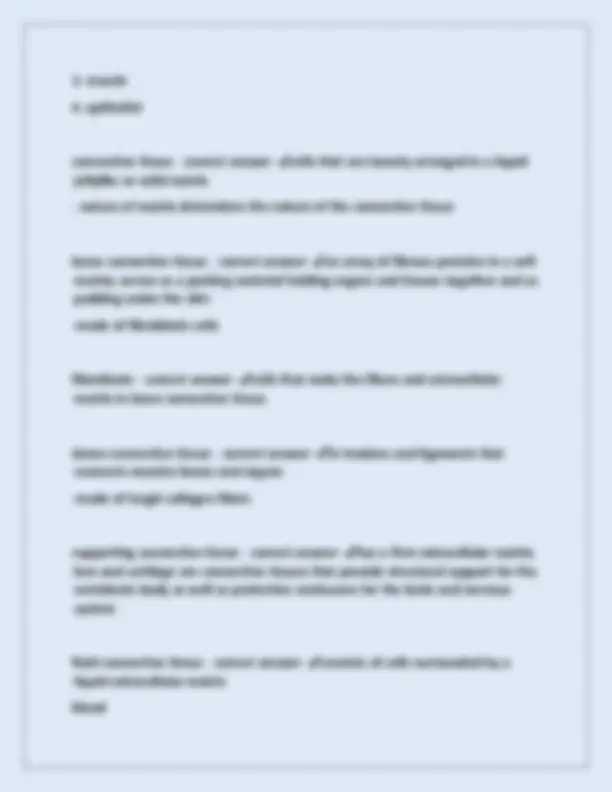
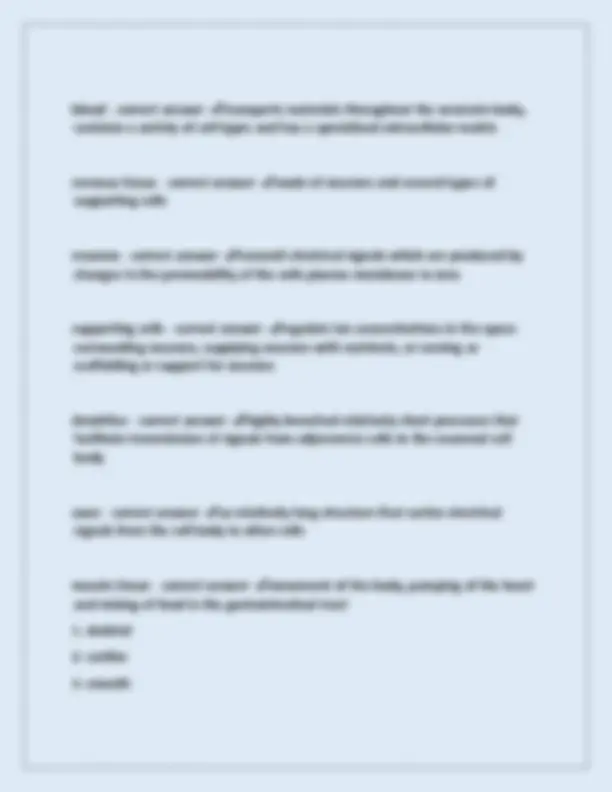
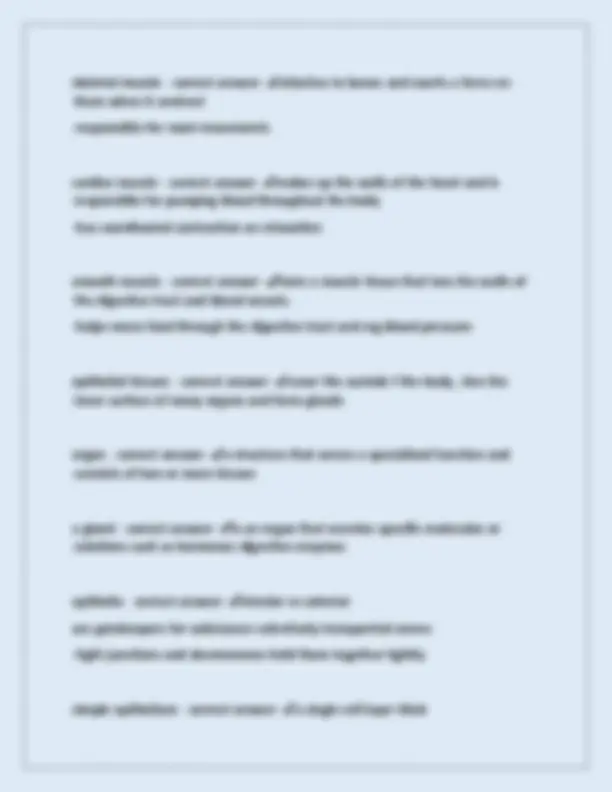
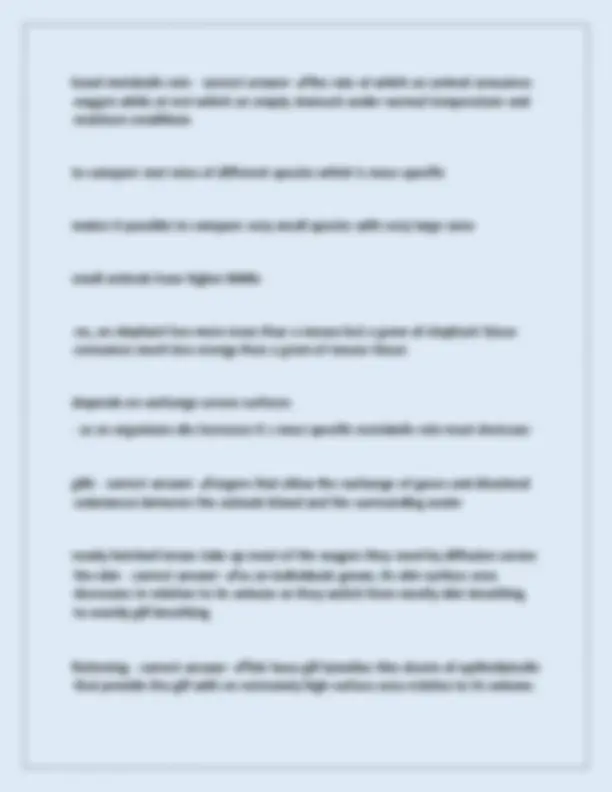

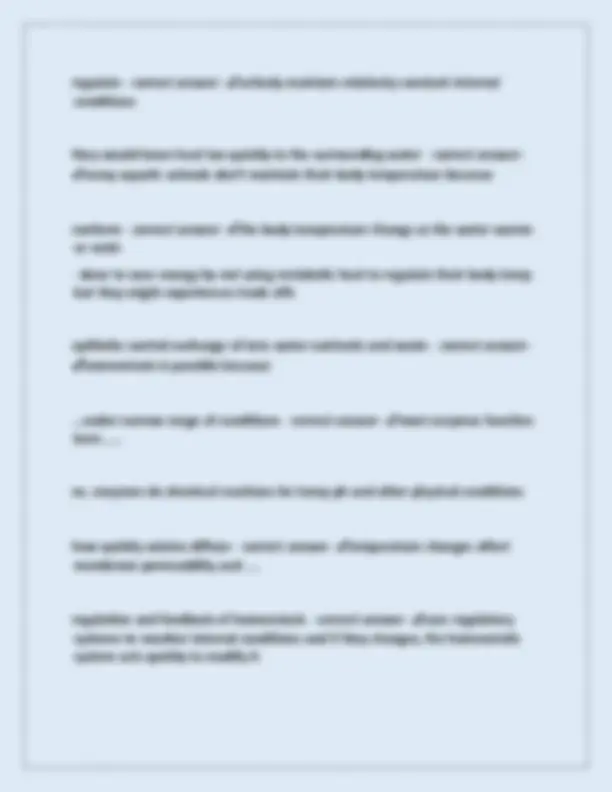
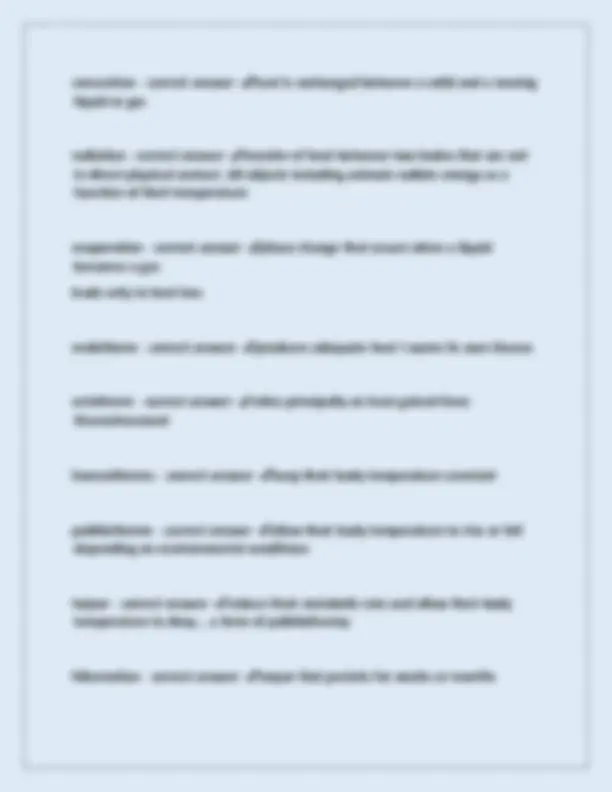
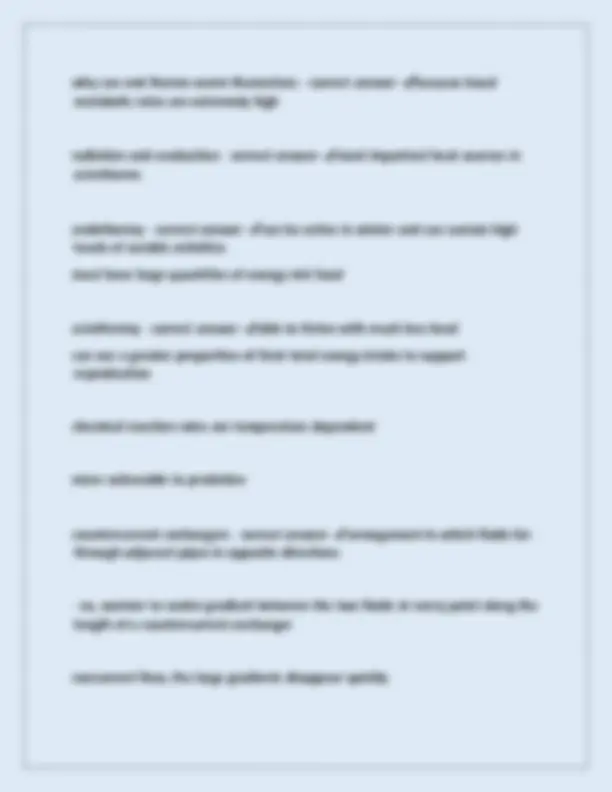
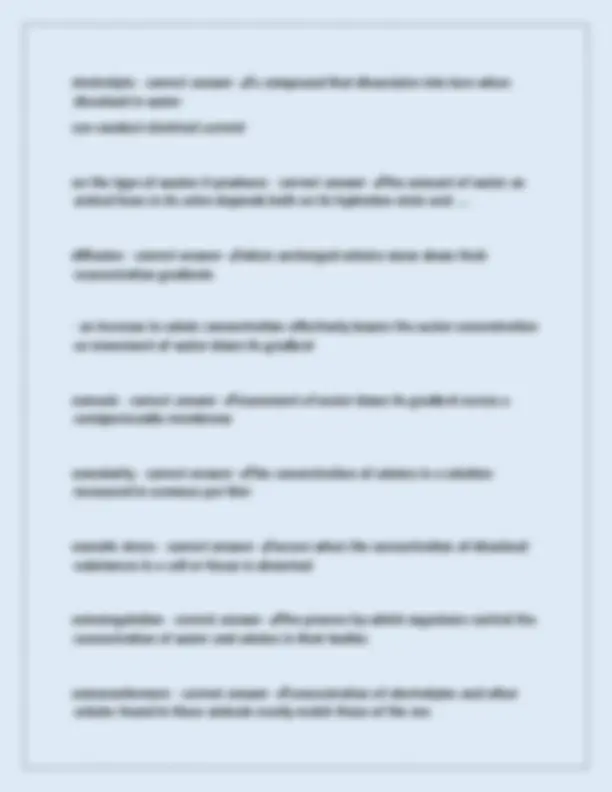
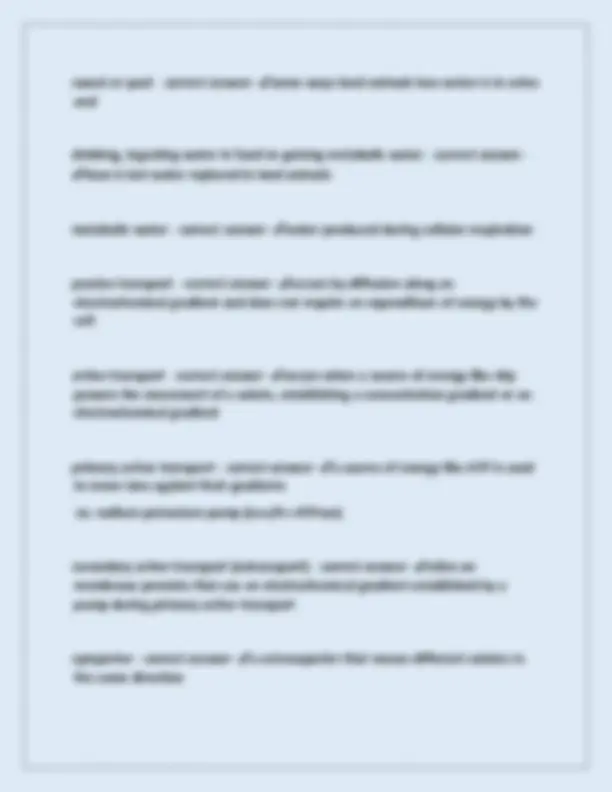
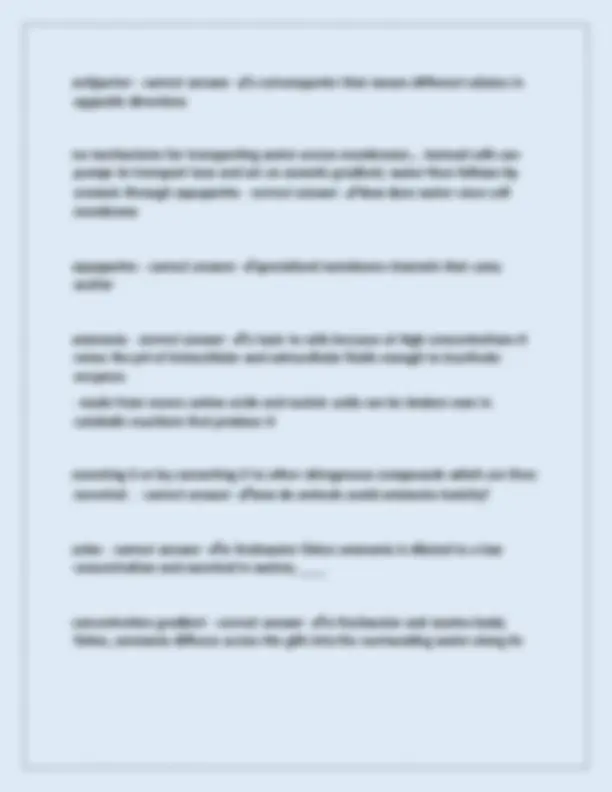
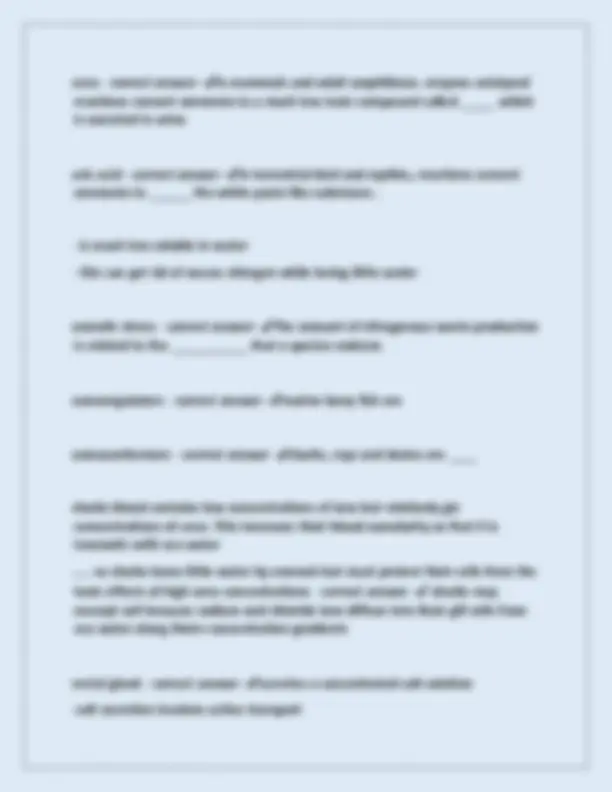
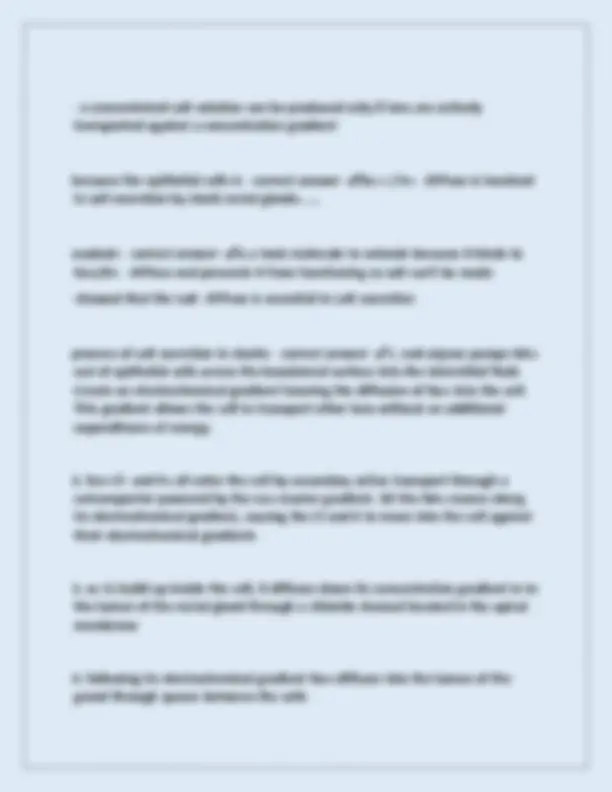
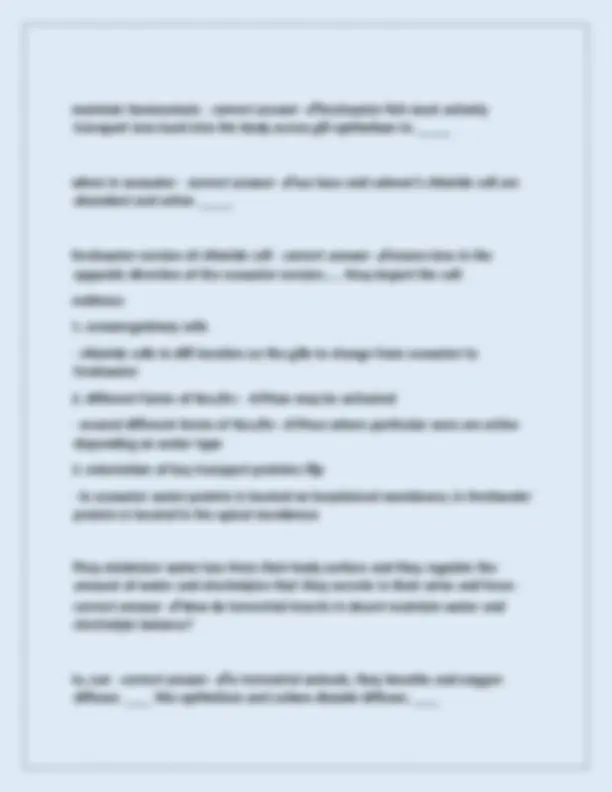
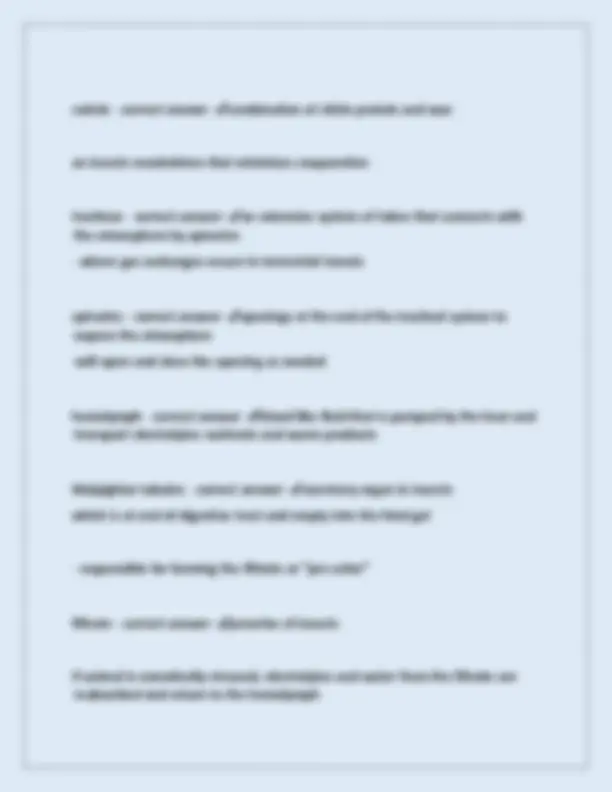

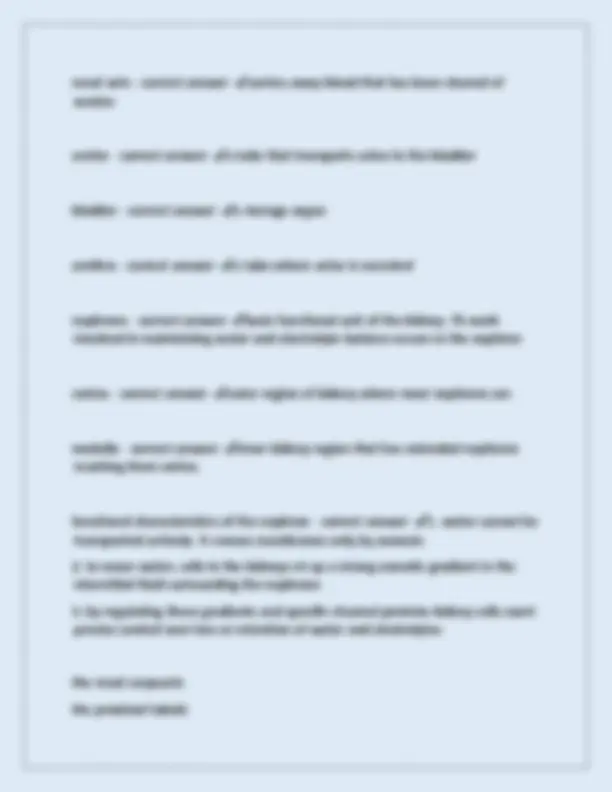
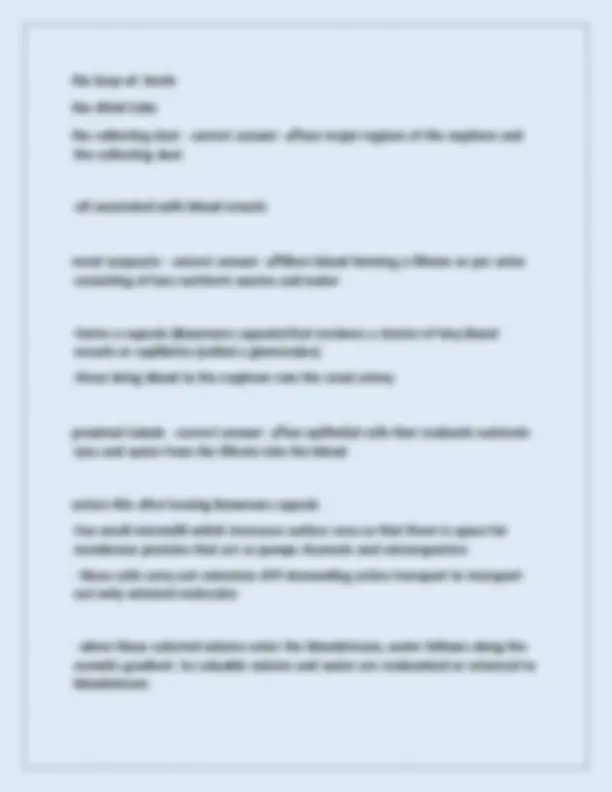
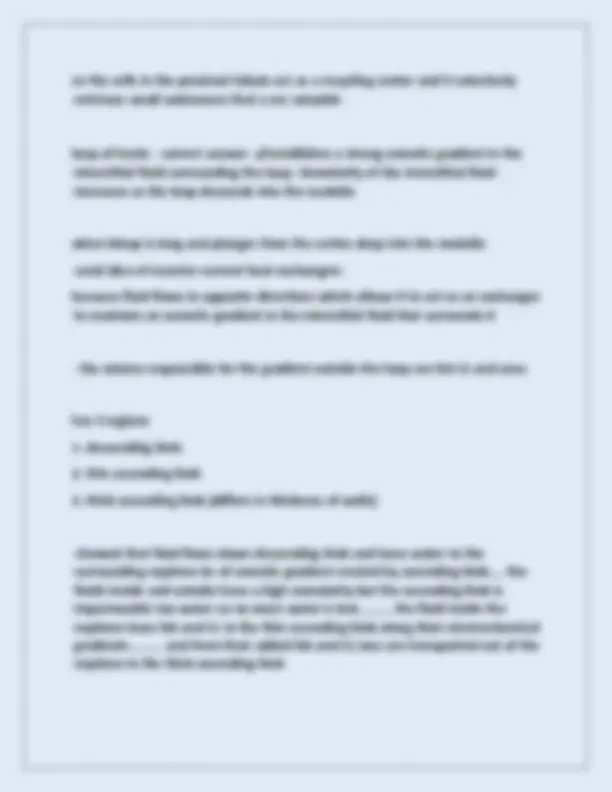
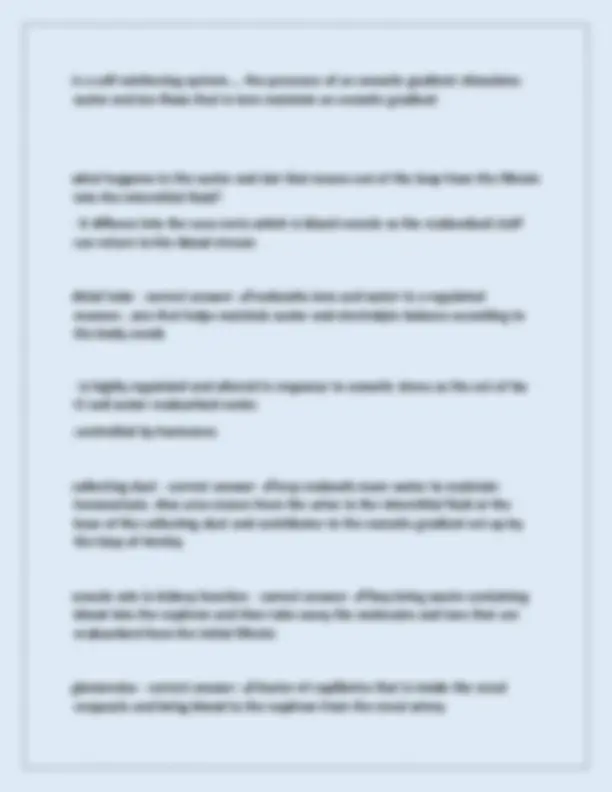
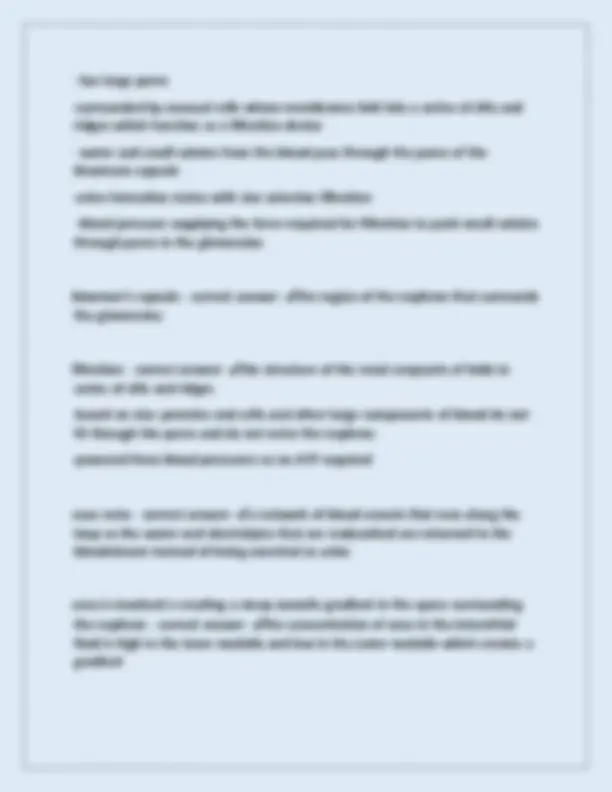
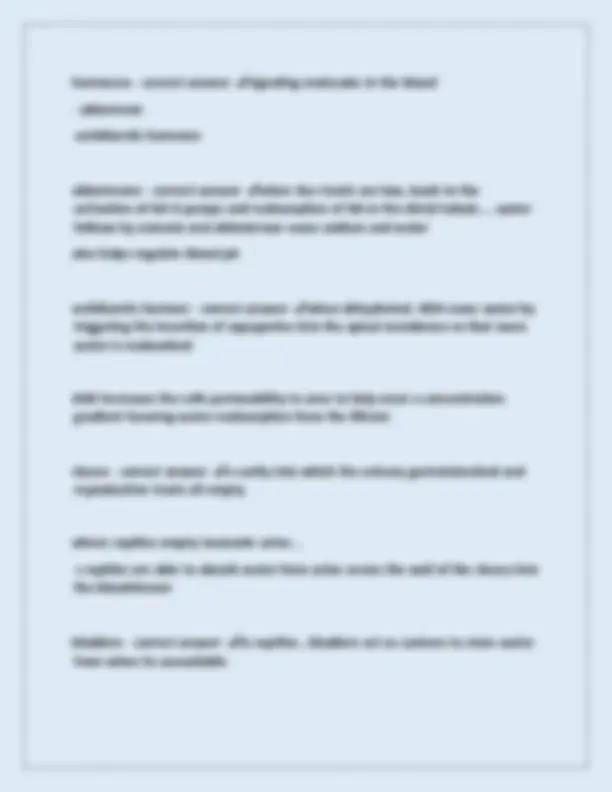
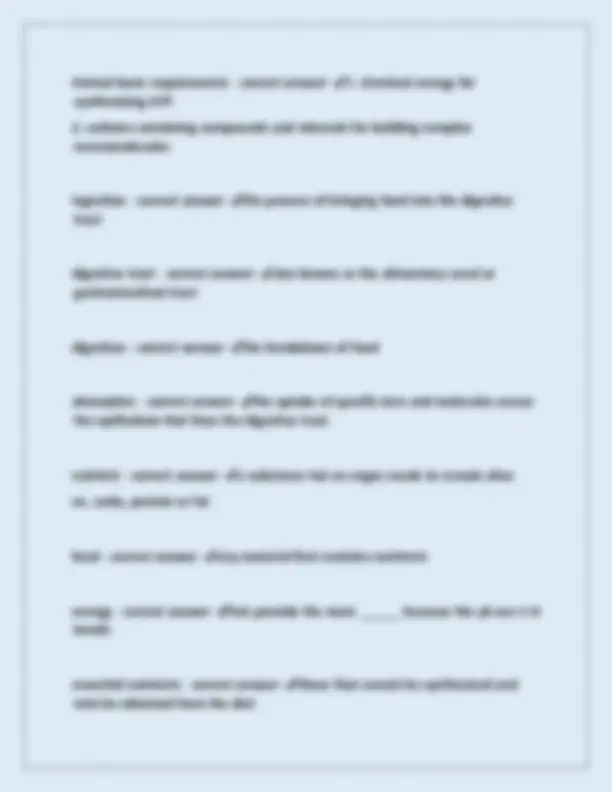
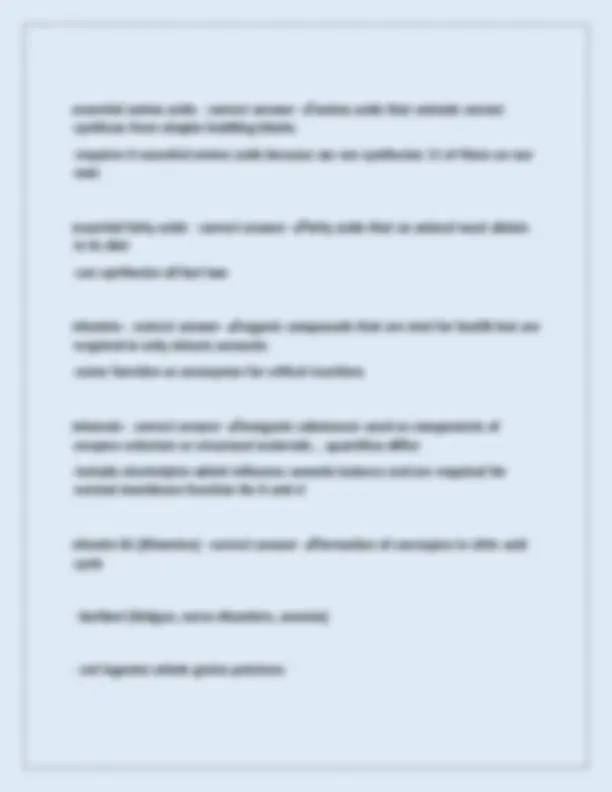
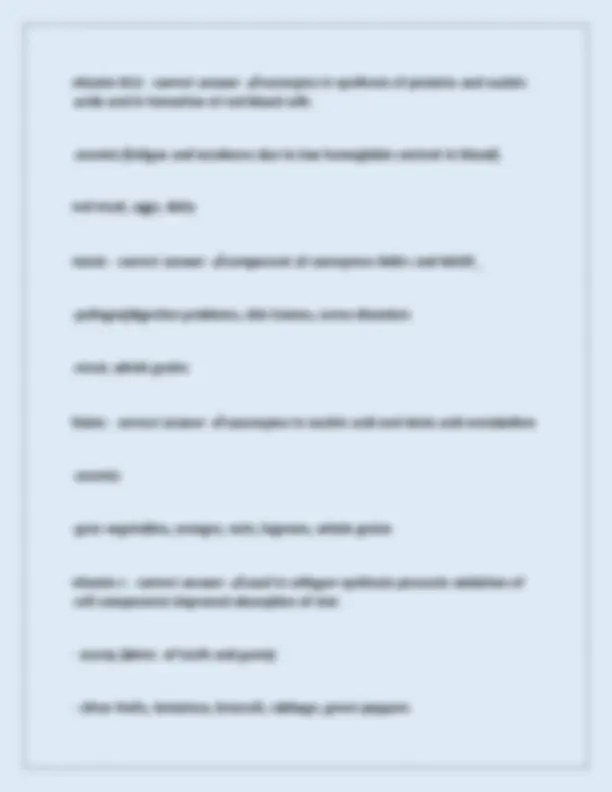
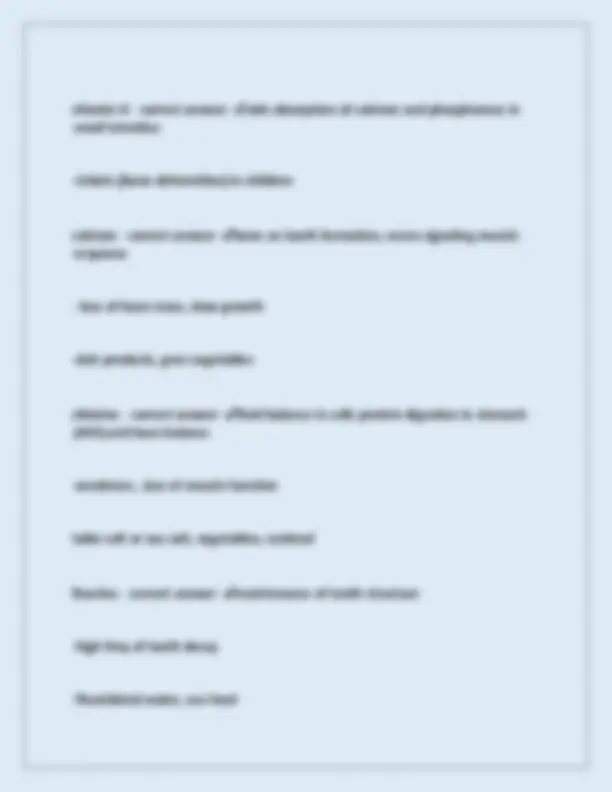
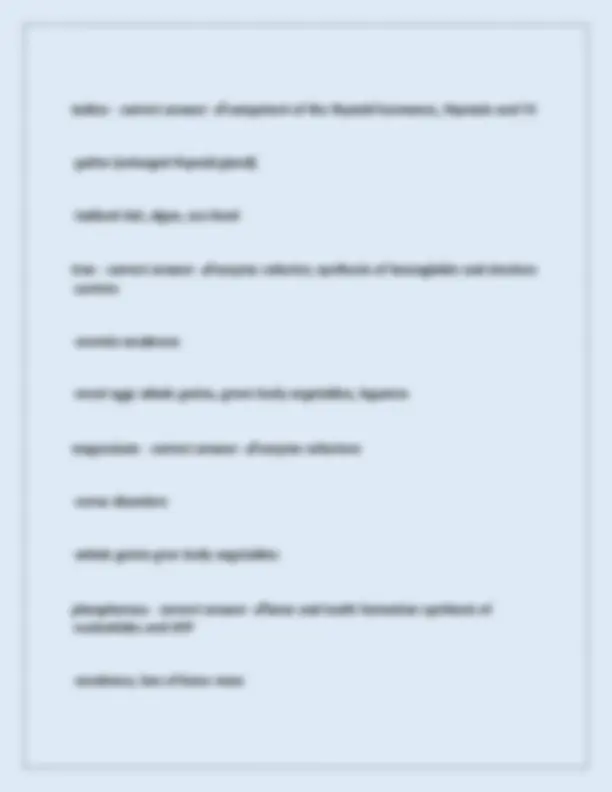
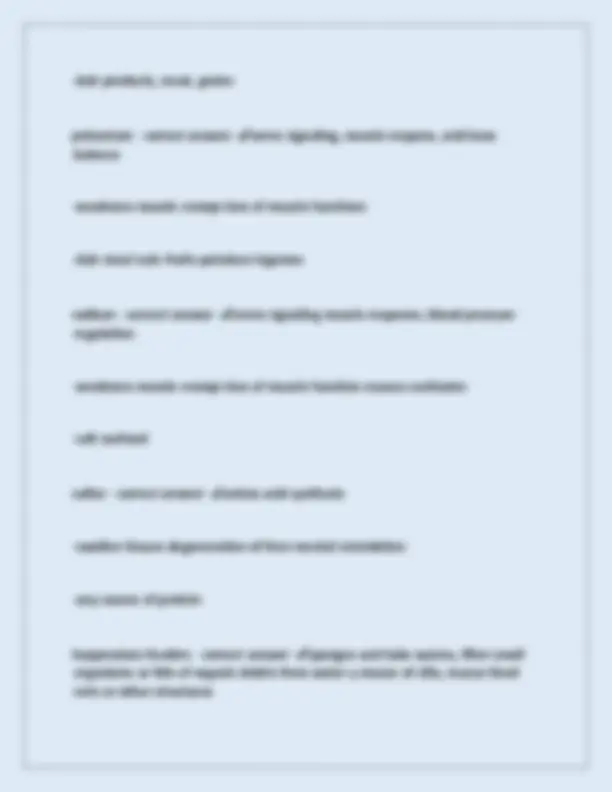
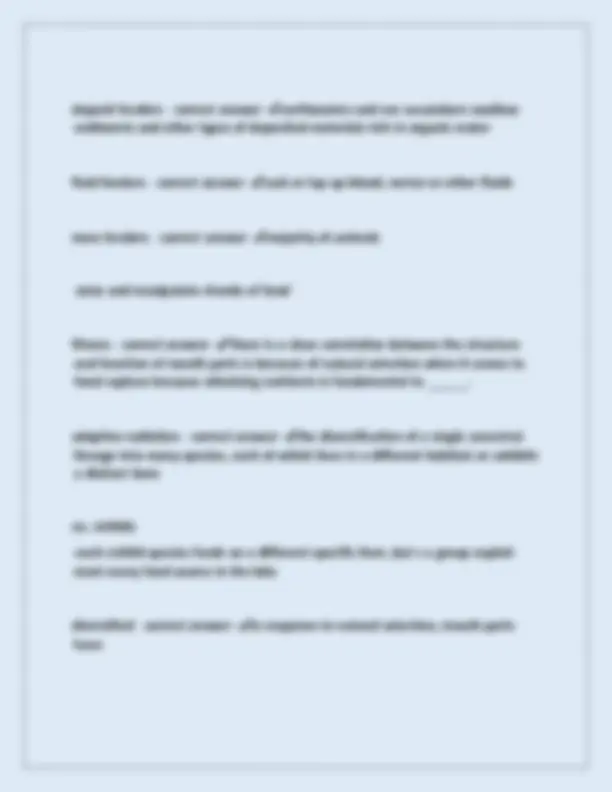
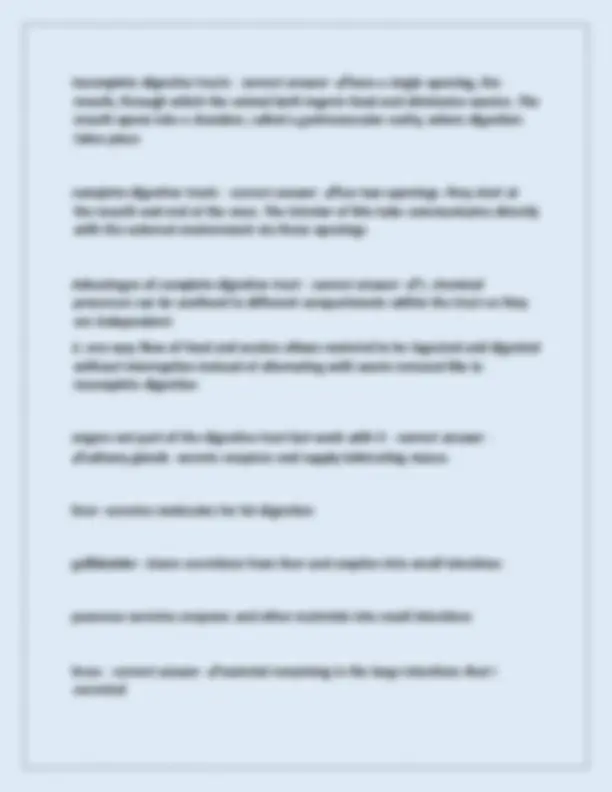
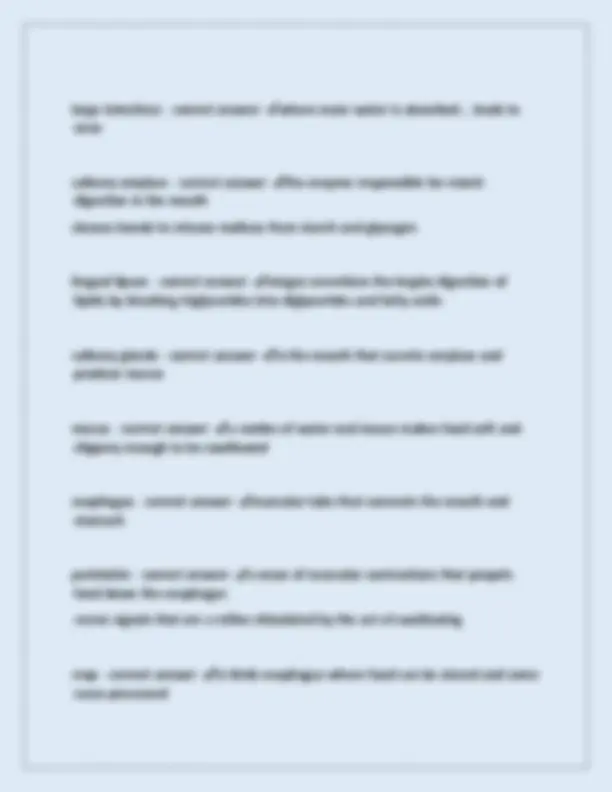
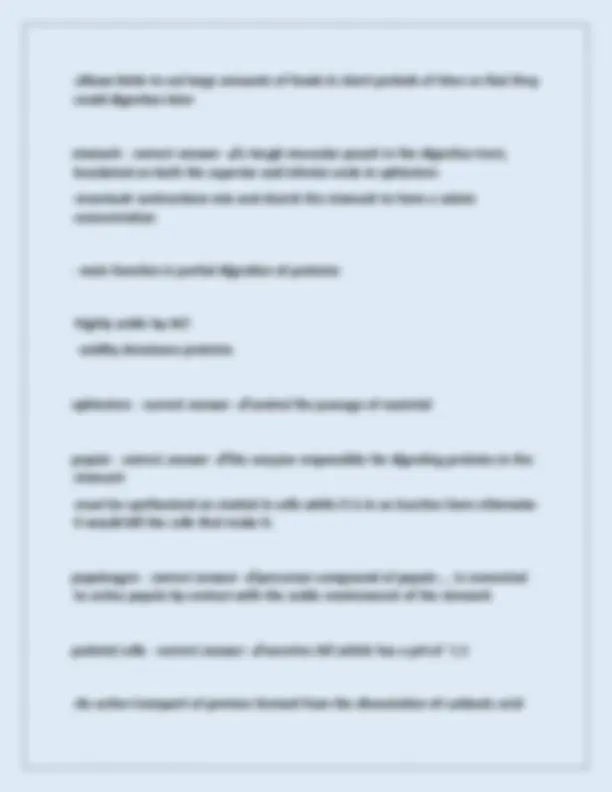
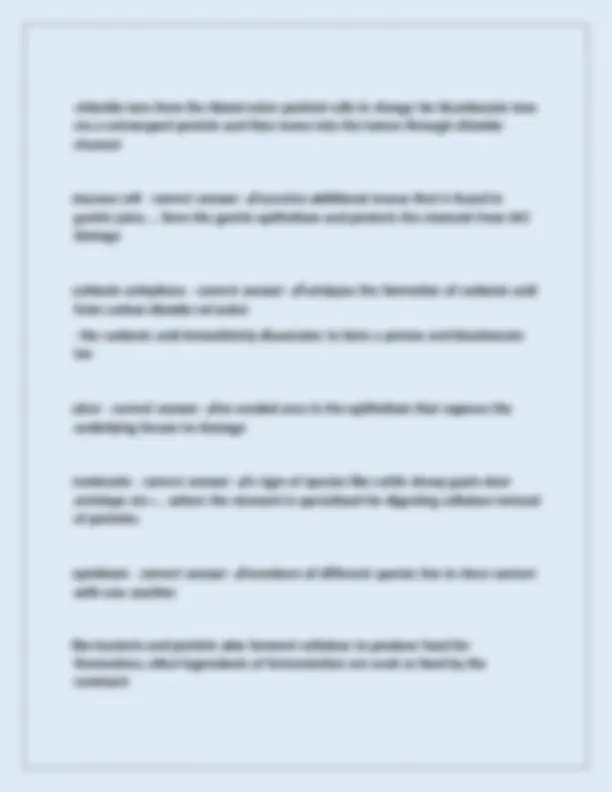
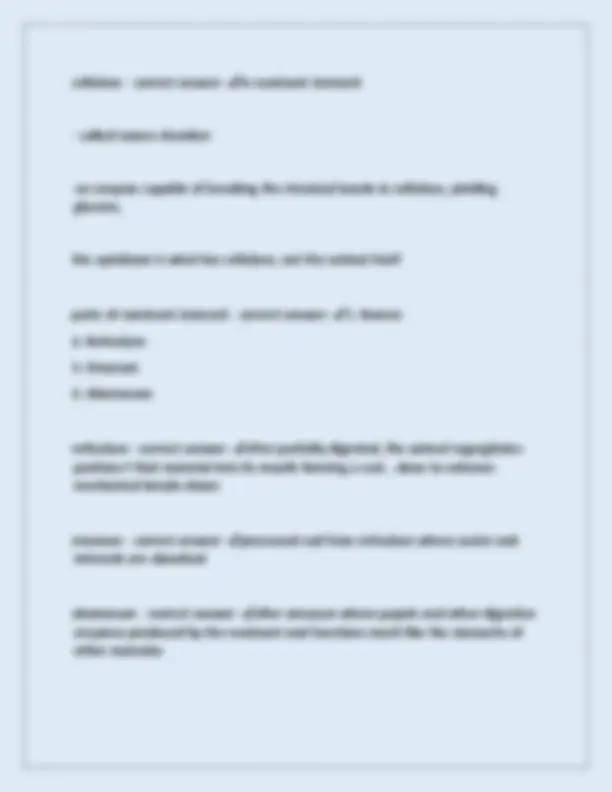
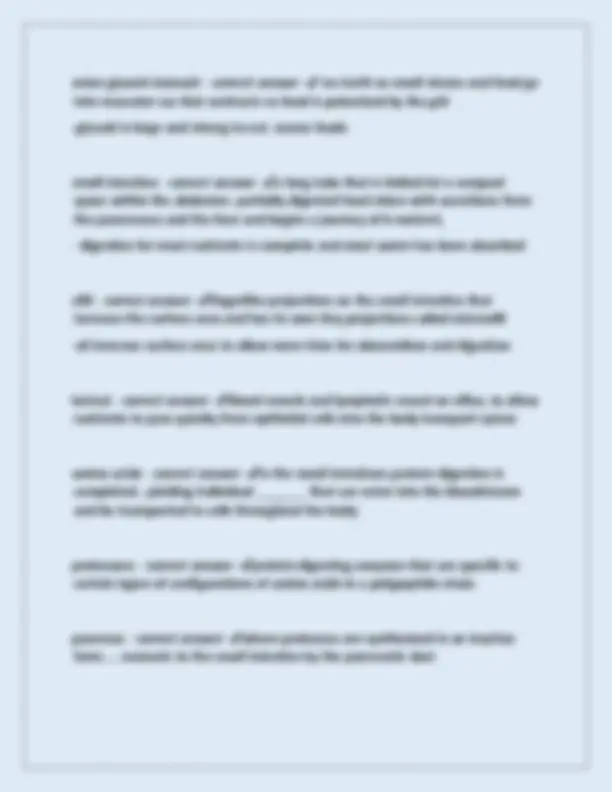

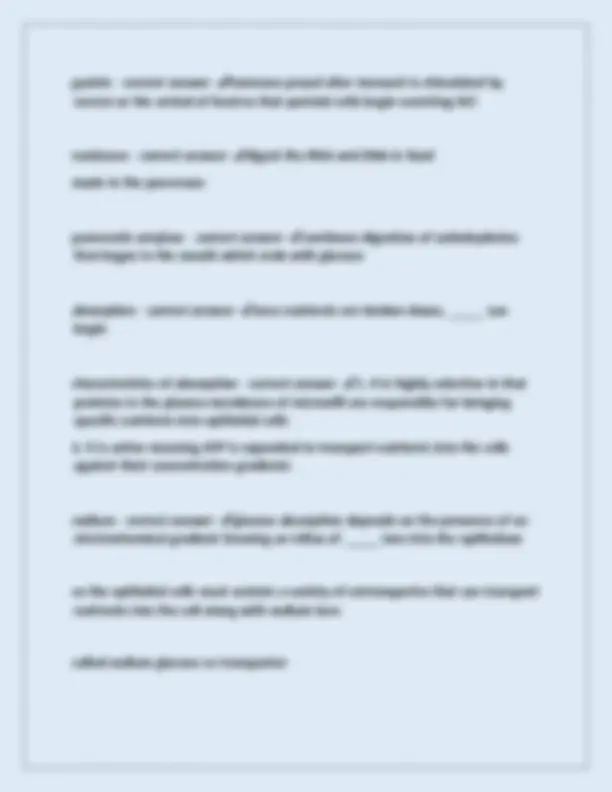
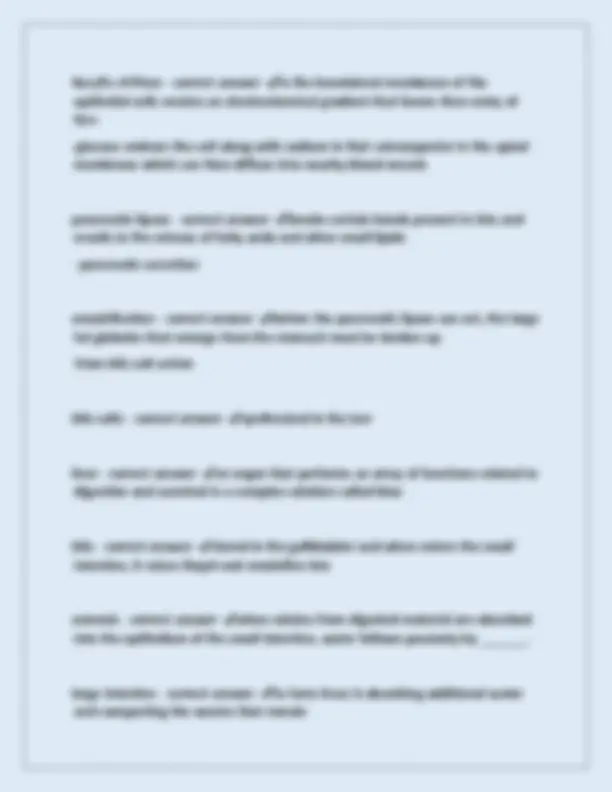
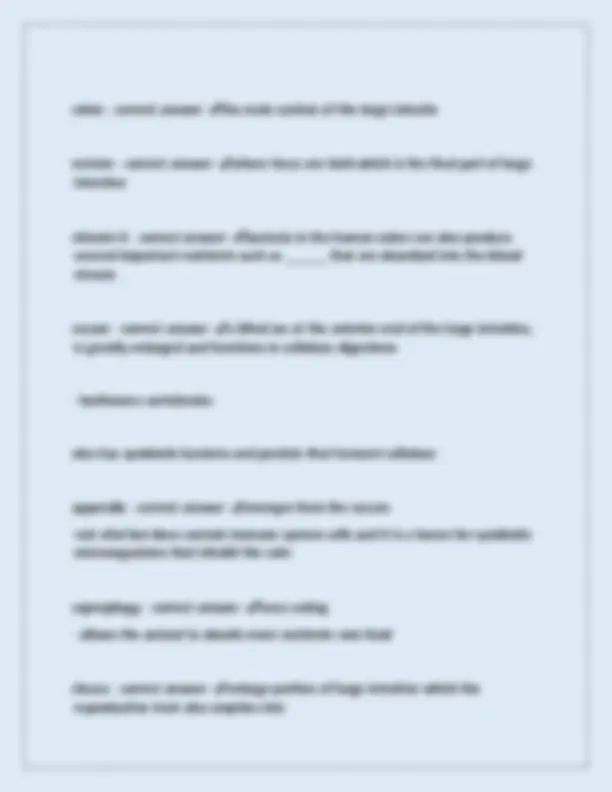
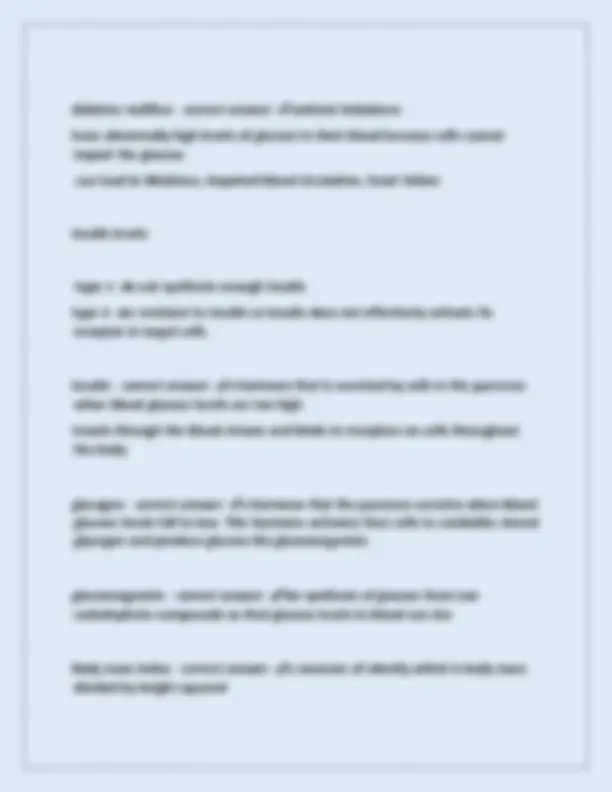
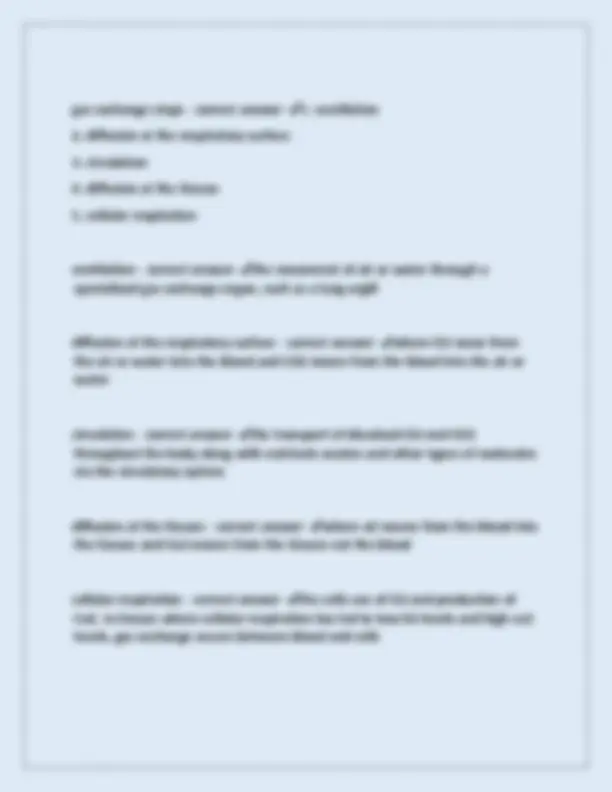
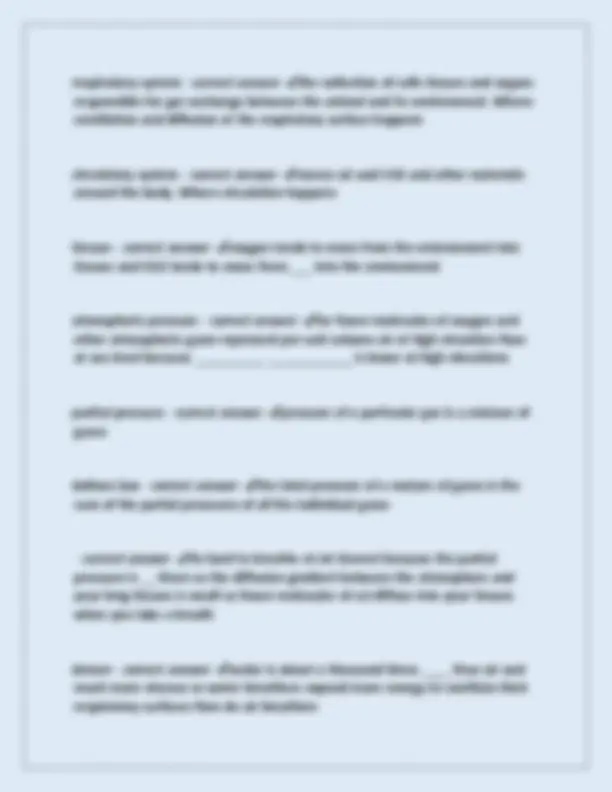
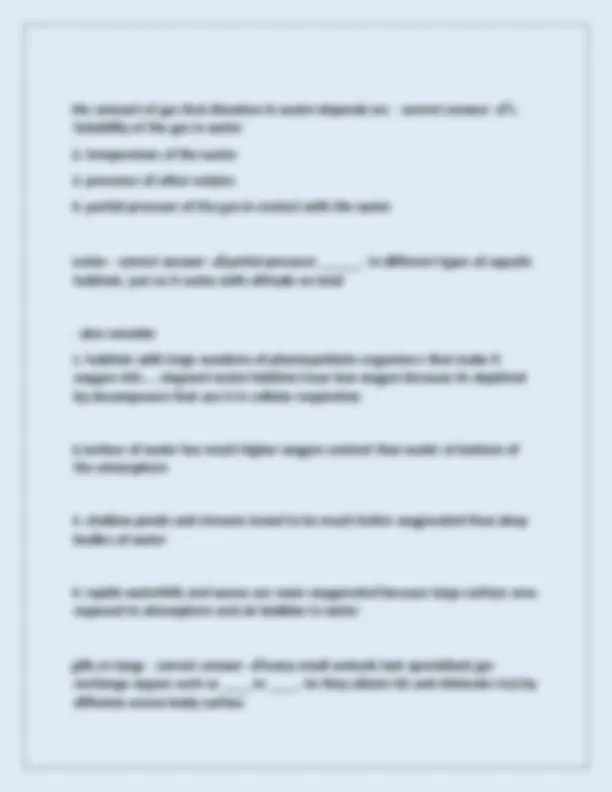
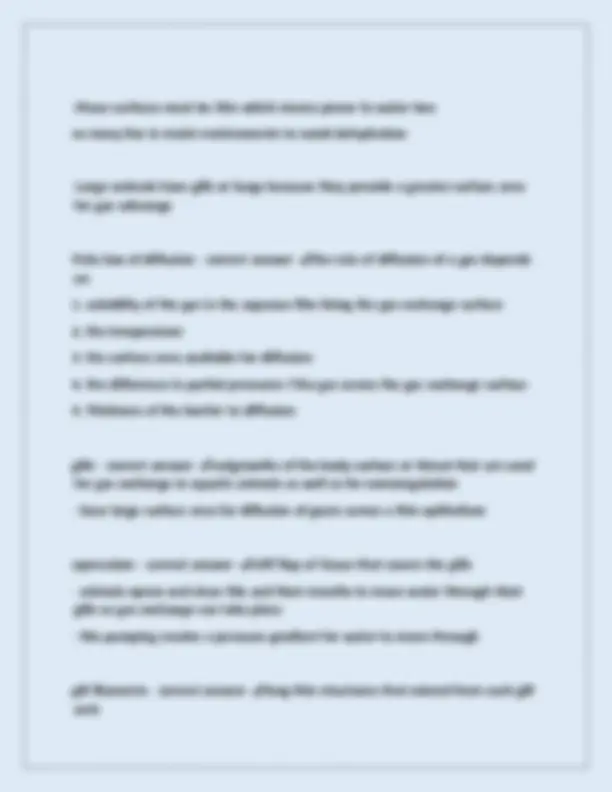
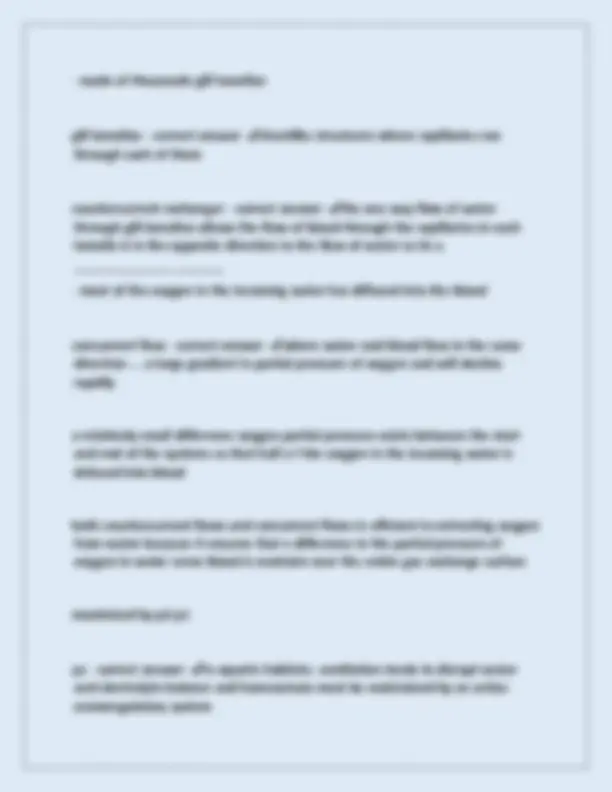
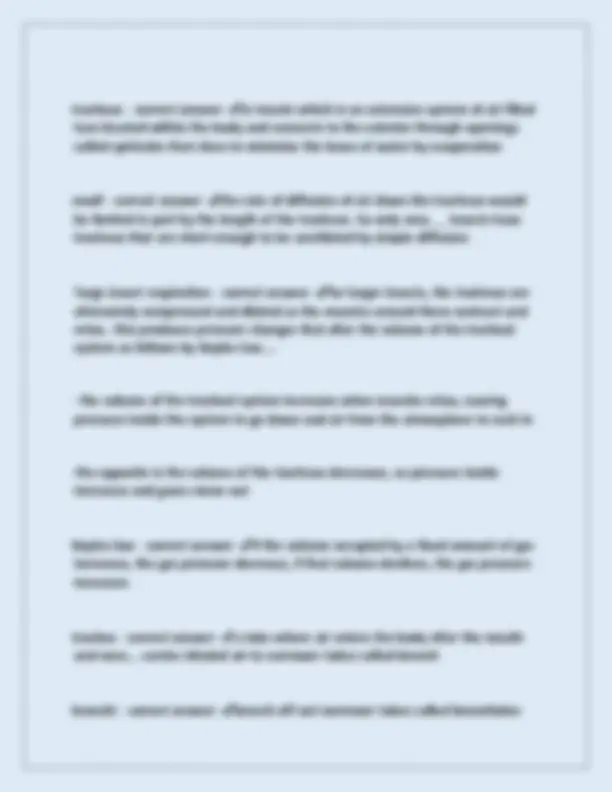
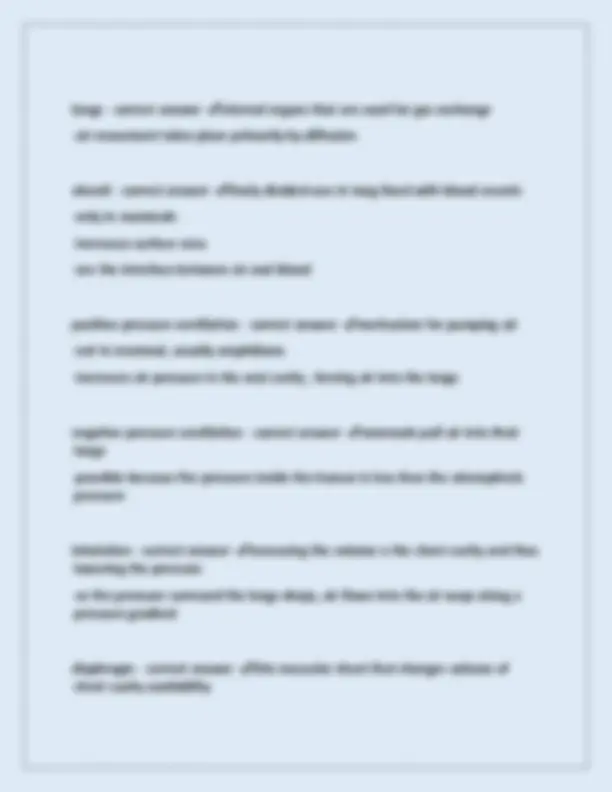

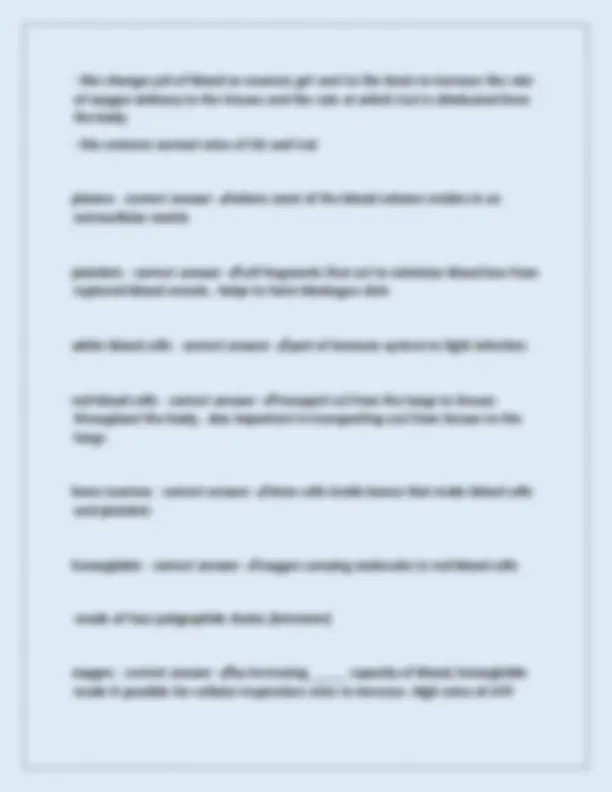
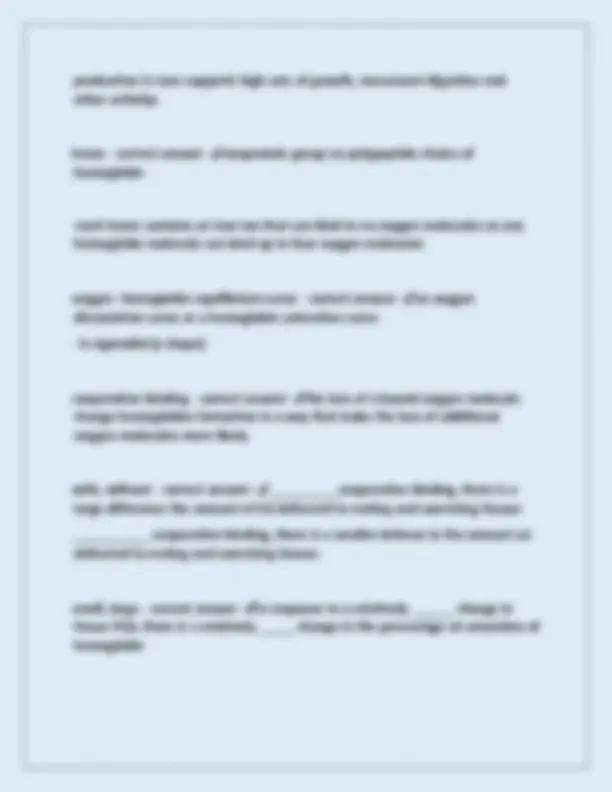
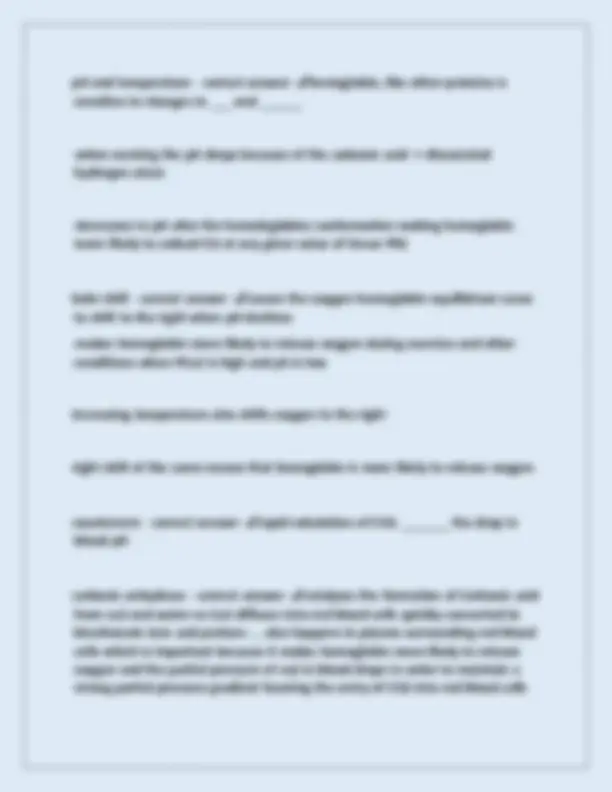
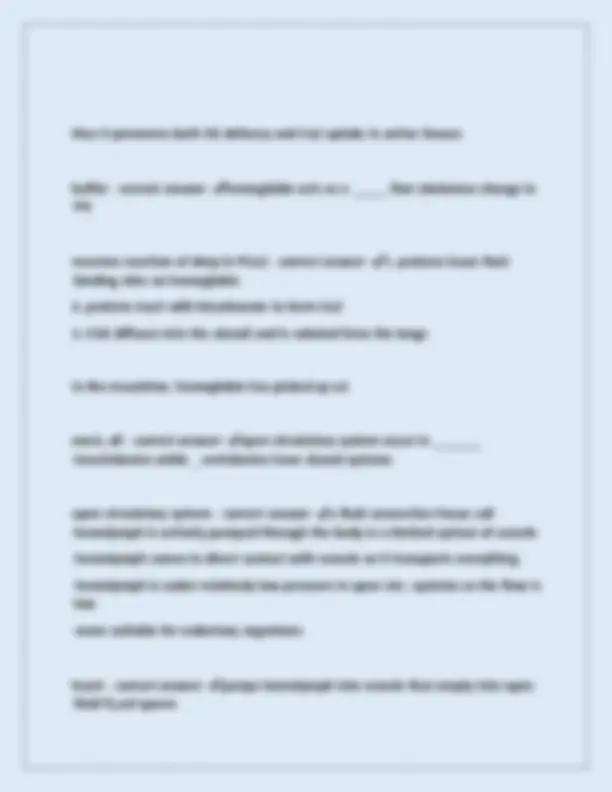
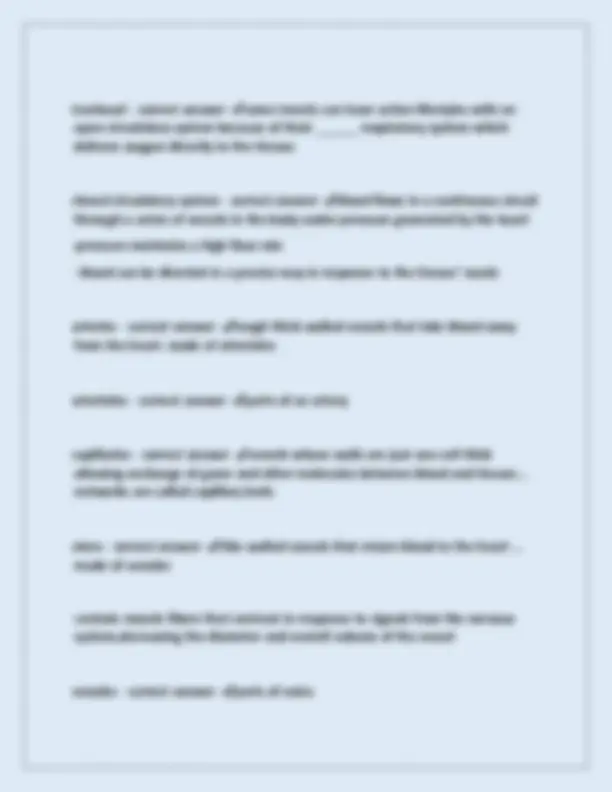
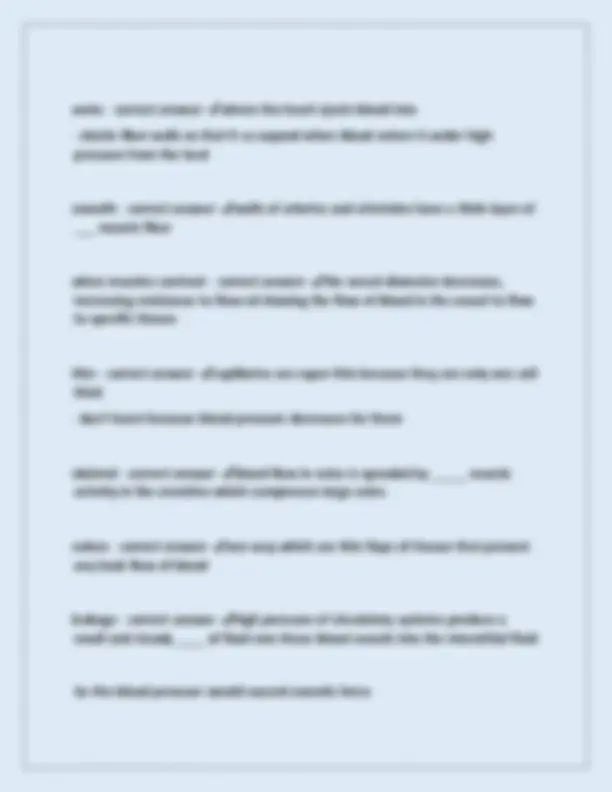
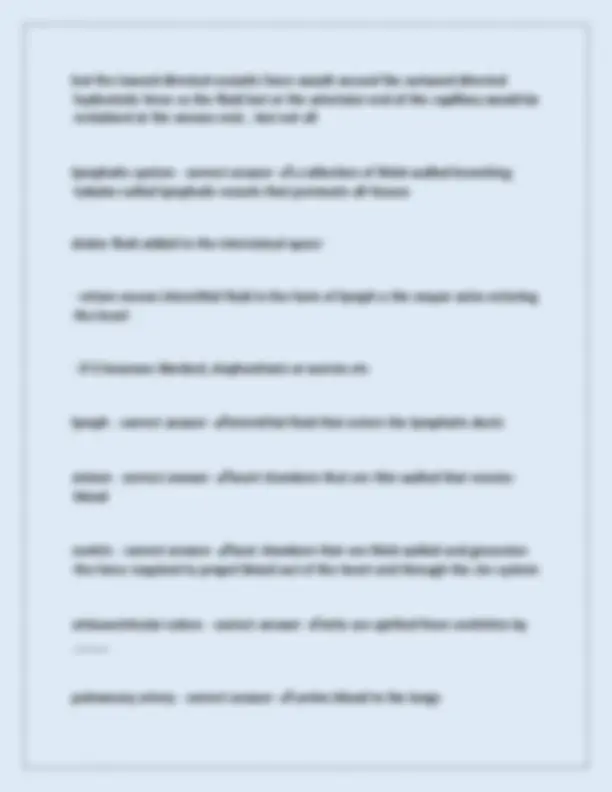
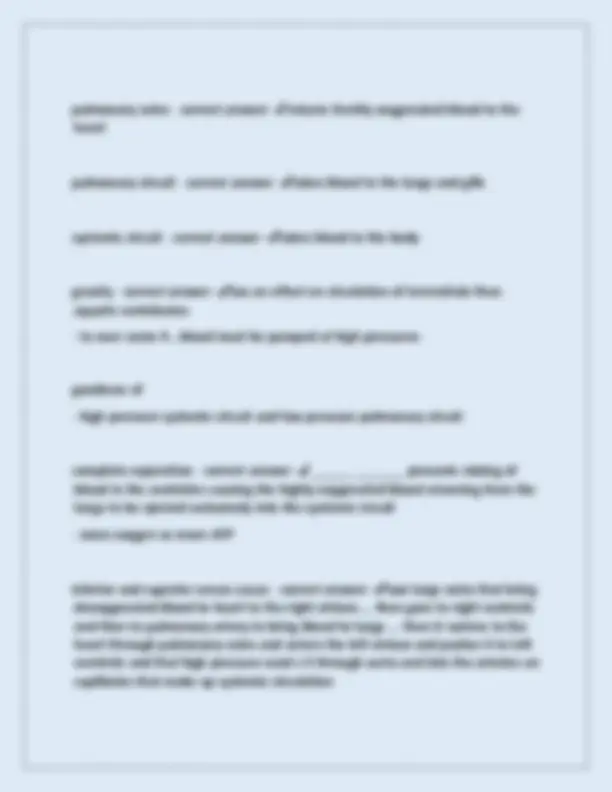
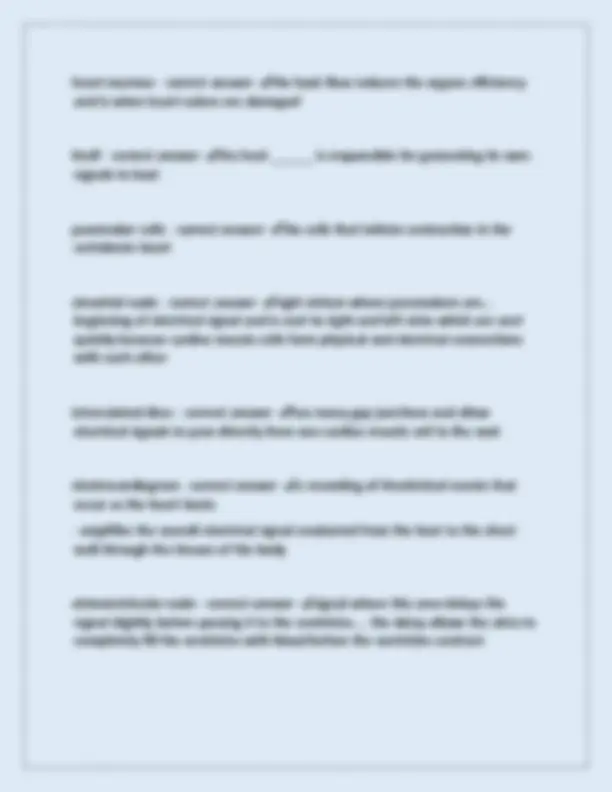
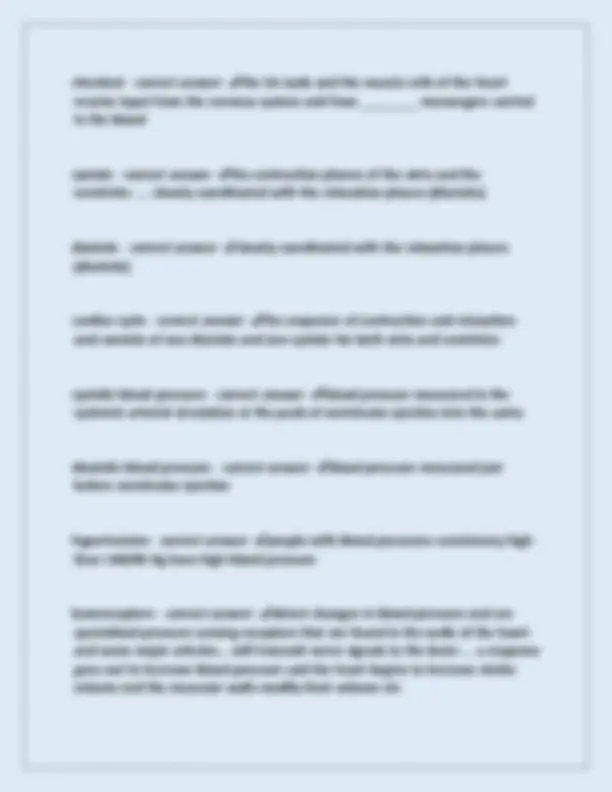
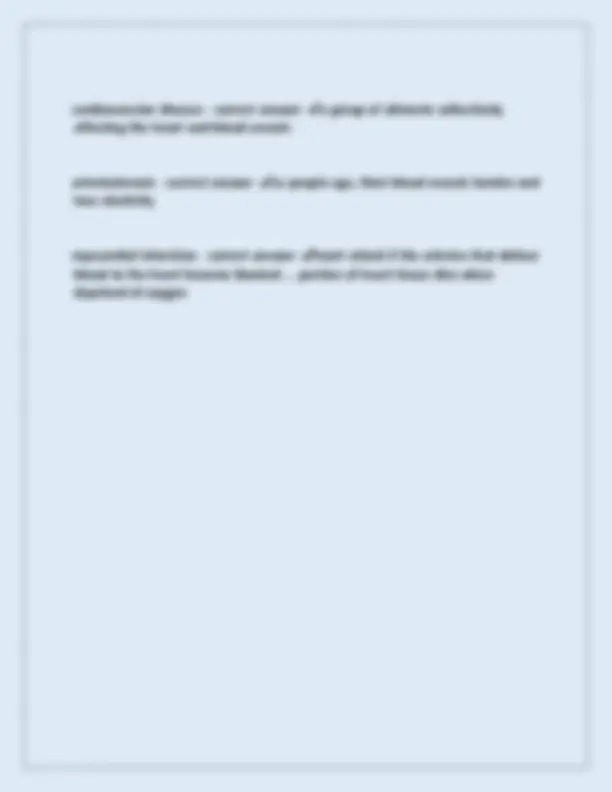


Study with the several resources on Docsity

Earn points by helping other students or get them with a premium plan


Prepare for your exams
Study with the several resources on Docsity

Earn points to download
Earn points by helping other students or get them with a premium plan
Community
Ask the community for help and clear up your study doubts
Discover the best universities in your country according to Docsity users
Free resources
Download our free guides on studying techniques, anxiety management strategies, and thesis advice from Docsity tutors
Uconn Bio 1107 exam 4 with solutions
Typology: Exams
1 / 67

This page cannot be seen from the preview
Don't miss anything!




























































Anatomy |- |correct |answer |-✔an |organisms |physical |structure |or |form physiology |- |correct |answer |-✔how |the |physical |structures |in |an |organism |function adaptations |- |correct |answer |-✔heritable |traits |that |make |individuals |more |likely |to |survive |and |reproduce |in |a |certain |environment |than |individuals |that |lack |those |traits natural |selection |- |correct |answer |-✔when |individuals |with |certain |alleles |have |more |offspring |that |survive |to |reproductive |age |than |do |individuals |with |different |alleles fitness |- |correct |answer |-✔ability |to |produce |viable |offspring pre |existing |traits |- |correct |answer |-✔all |adaptations |derive |from trade |offs |- |correct |answer |-✔inescapable |compromises |between |traits spermatophore |- |correct |answer |-✔a |packet |of |sperm |surrounded |by |a |large |gelatinous |mass
acclimatization |- |correct |answer |-✔short |term |phenotypic |change |in |an |individual |in |response |to |environmental |changes
blood |- |correct |answer |-✔transports |materials |throughout |the |venerate |body, |contains |a |variety |of |cell |types |and |has |a |specialized |extracellular |matrix nervous |tissue |- |correct |answer |-✔made |of |neurons |and |several |types |of |supporting |cells neurons |- |correct |answer |-✔transmit |electrical |signals |which |are |produced |by |changes |in |the |permeability |of |the |cells |plasma |membrane |to |ions supporting |cells |- |correct |answer |-✔regulate |ion |concentrations |in |the |space |surrounding |neurons, |supplying |neurons |with |nutrients, |or |serving |as |scaffolding |or |support |for |neurons dendrites |- |correct |answer |-✔highly |branched |relatively |short |processes |that |facilitate |transmission |of |signals |from |adjacencies |cells |to |the |neuronal |cell |body axon |- |correct |answer |-✔aa |relatively |long |structure |that |carries |electrical |signals |from |the |cell |body |to |other |cells muscle |tissue |- |correct |answer |-✔movement |of |the |body, |pumping |of |the |heart |and |mixing |of |food |in |the |gastrointestinal |tract
skeletal |muscle |- |correct |answer |-✔attaches |to |bones |and |exerts |a |force |on |them |when |it |contract -responsible |for |most |movements cardiac |muscle |- |correct |answer |-✔makes |up |the |walls |of |the |heart |and |is |responsible |for |pumping |blood |throughout |the |body -has |coordinated |contraction |an |relaxation smooth |muscle |- |correct |answer |-✔form |a |muscle |tissue |that |Ines |the |walls |of |the |digestive |tract |and |blood |vessels. -helps |move |food |through |the |digestive |tract |and |reg |blood |pressure epithelial |tissues |- |correct |answer |-✔cover |the |outside |f |the |body |, |line |the |inner |surface |of |many |organs |and |form |glands organ |- |correct |answer |-✔a |structure |that |serves |a |specialized |function |and |consists |of |two |or |more |tissues a |gland |- |correct |answer |-✔is |an |organ |that |secretes |specific |molecules |or |solutions |such |as |hormones |digestive |enzymes epithelia |- |correct |answer |-✔interior |vs |exterior are |gatekeepers |for |substances |selectively |transported |across -tight |junctions |and |desmosomes |hold |them |together |tightly simple |epithelium |- |correct |answer |-✔a |single |cell |layer |thick
small |animals |- |correct |answer |-✔lose |heat |and |water |more |rapidly |than |large |large |animals |and |are |more |susceptible |to |damage |from |the |cold |or |dehydration surface |area |to |volume |relationship |- |correct |answer |-✔rate |at |whcih |these |and |other |molecules |and |ions |diffuse |depends |in |surface |area |available |for |diffusion rate |at |which |nutrients |are |used |and |heat |and |waste |products |are |produced |depends |the |volume |of |the |animal as |an |animal |gets |larger, |its |volume |increases |much |more |rapidly |than |its |surface |area |does surface |area |of |a |cube |increases |its |linear |dimension |squared volume |increase |as |a |unction |of |linear |dimension |cubed surge |area |increase |much |more |slowly |than |does |its |volume |or |mass metabolic |rate metabolic |rate |- |correct |answer |-✔the |overall |rate |of |energy |consumption |by |an |individual often |measured |in |terms |of |o2 |consumption
basal |metabolic |rate |- |correct |answer |-✔the |rate |at |which |an |animal |consumes |oxygen |while |at |rest |which |an |empty |stomach |under |normal |temperature |and |moisture |conditions to |compare |met |rates |of |different |species |which |is |mass |specific makes |it |possible |to |compare |very |small |species |with |very |large |ones small |animals |have |higher |BMRs -ex, |an |elephant |has |more |mass |than |a |mouse |but |a |gram |of |elephant |tissue |consumes |much |less |energy |than |a |gram |of |mouse |tissue depends |on |exchange |across |surfaces
regulate |- |correct |answer |-✔actively |maintain |relatively |constant |internal |conditions they |would |loose |heat |too |quickly |to |the |surrounding |water |- |correct |answer |- ✔many |aquatic |animals |don't |maintain |their |body |temperature |because conform |- |correct |answer |-✔the |body |temperature |Changs |as |the |water |warms |or |cools
set |point |- |correct |answer |-✔a |normal |or |target |range |of |values |for |the |control |variable homeostatic |system |consists |of |- |correct |answer |-✔a |sensor |and |integrator |and |an |effector sensor |- |correct |answer |-✔a |structure |that |senses |some |aspect |of |the |external |and |internal |environment integrator |- |correct |answer |-✔evaluates |the |incoming |sensory |information |by |comparing |it |to |the |set |point |and |determines |whether |a |response |is |necessary |to |achieve |homeostasis effector |- |correct |answer |-✔any |structure |that |helps |restore |the |internal |condition |being |monitored |by |the |system hypothalumus |- |correct |answer |-✔receptors |in |the |brain |region |that |respond |in |a |similar |fashion |to |changes |in |blood |temperature homeostatic |control sensor |-> |integrator(at |hypothalamus) |-> |effector negative |feedback |- |correct |answer |-✔effectors |reduce |or |oppose |the |change |in |internal |conditions
convection |- |correct |answer |-✔heat |is |exchanged |between |a |solid |and |a |moving |liquid |or |gas radiation |- |correct |answer |-✔transfer |of |heat |between |two |bodes |that |are |not |in |direct |physical |contact. |All |objects |including |animals |radiate |energy |as |a |function |of |their |temperature evaporation |- |correct |answer |-✔phase |change |that |occurs |when |a |liquid |becomes |a |gas leads |only |to |heat |loss endotherm |- |correct |answer |-✔produces |adequate |heat |t |warm |its |own |tissues ectotherm |- |correct |answer |-✔relies |principally |on |heat |gained |from |theenvironment homeotherms |- |correct |answer |-✔keep |their |body |temperature |constant poikilotherms |- |correct |answer |-✔allow |their |body |temperature |to |rise |or |fall |depending |on |environmental |conditions torpor |- |correct |answer |-✔reduce |their |metabolic |rate |and |allow |their |body |temperature |to |drop... |a |form |of |poikilothermy hibernation |- |correct |answer |-✔torpor |that |persists |for |weeks |or |months
why |can |end |therms |warm |themselves |- |correct |answer |-✔because |basal |metabolic |rates |are |extremely |high radiation |and |conduction |- |correct |answer |-✔most |important |heat |sources |in |ectotherms endothermy |- |correct |answer |-✔can |be |active |in |winter |and |can |sustain |high |levels |of |aerobic |activities must |have |large |quantities |of |energy |rich |food ectothermy |- |correct |answer |-✔able |to |thrive |with |much |less |food can |use |a |greater |proportion |of |their |total |energy |intake |to |support |reproduction chemical |reaction |rates |are |temperature |dependent more |vulnerable |to |predation countercurrent |exchangers |- |correct |answer |-✔arrangement |in |which |fluids |for |through |adjacent |pipes |in |opposite |directions
antiporter |- |correct |answer |-✔a |cotransporter |that |moves |different |solutes |in |opposite |directions no |mechanisms |for |transporting |water |across |membranes... |instead |cells |use |pumps |to |transport |ions |and |set |an |osmotic |gradient; |water |then |follows |by |osmosis |through |aquaporins |- |correct |answer |-✔How |does |water |cross |cell |membrane aquaporins |- |correct |answer |-✔specialized |membrane |channels |that |carry |watter ammonia |- |correct |answer |-✔is |toxic |to |cells |because |at |high |concentrations |it |raises |the |pH |of |intracellular |and |extracellular |fluids |enough |to |inactivate |enzymes
urea |- |correct |answer |-✔in |mammals |and |adult |amphibians. |enzyme-catalyzed |reactions |convert |ammonia |to |a |much |less |toxic |compound |called |_____ |which |is |excreted |in |urine uric |acid |- |correct |answer |-✔in |terrestrial |bird |and |reptiles, |reactions |convert |ammonia |to |______ |the |white |paste |like |substance..